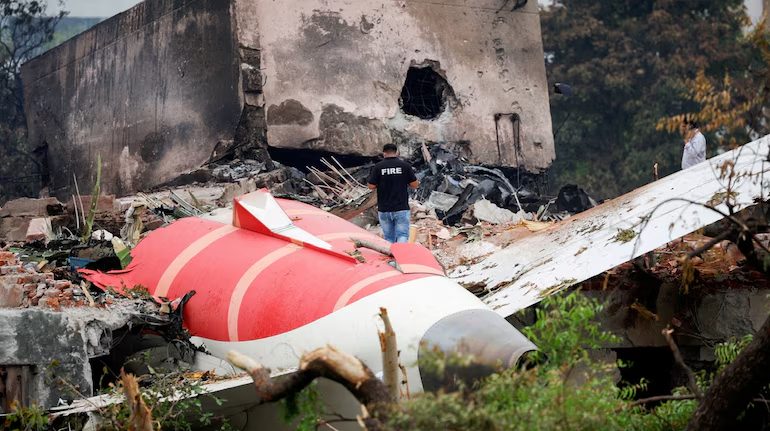A tragic air crash involving Air India Flight AI171, a Boeing 787-8 Dreamliner, has shaken the nation. The accident occurred shortly after takeoff from Ahmedabad to London Gatwick on June 12, resulting in the death of over 270 people, including passengers and people on the ground.
In a recent development, US aircraft manufacturer Boeing released an official statement reacting to the initial investigation report shared by India’s Aircraft Accident Investigation Bureau (AAIB).
Boeing Shares Condolences and Assures Cooperation
In a heartfelt note, Boeing expressed deep sorrow for the lives lost in the AI171 crash. The company conveyed sympathy for the families of the passengers, crew, and those affected on the ground.
Boeing also stated that it is actively supporting the investigation and respecting the leadership of India’s AAIB, which is handling the probe according to global aviation rules set by ICAO Annex 13 protocol.
What The Preliminary Report Found
According to the initial findings by AAIB:
-
The aircraft was in the air for only 32 seconds.
-
Both engine fuel cutoff switches were turned to ‘CUTOFF’ during takeoff, cutting fuel to both engines.
-
Though the switches were returned to ‘RUN’ mode moments later, the engines could not recover quickly enough.
-
The plane crashed into a nearby medical college hostel, just under 1 nautical mile from the runway.
-
A total of 241 passengers and crew died, along with 30 people on the ground.
-
Only one passenger survived the crash.
Possible Technical Warning Ignored?
A new angle in the report mentioned that in 2018, the FAA (Federal Aviation Administration) had issued an advisory. It warned about the possibility of accidental activation of fuel cutoff switches on Boeing 787 aircraft and recommended protective safety guards.
However, the advisory was not mandatory, and Air India had not implemented the change, which raises questions about whether this step could have prevented the tragedy.
Multiple Agencies Involved in Investigation
Apart from the Indian AAIB, other major international bodies are also involved in the investigation:
-
Boeing (Aircraft Manufacturer)
-
FAA (US Federal Aviation Administration)
-
NTSB (US National Transportation Safety Board)
-
GE Aerospace (Engine Manufacturer)
-
UK AAIB (Air Accidents Investigation Branch)
All agencies are cooperating under the ICAO Annex 13 guidelines, which set international standards for air crash investigations.
Conclusion
The crash of Air India Flight AI171 is one of the deadliest aviation disasters in India’s recent history. With technical failures and operational questions being raised, the role of safety advisories and airline maintenance practices is under close review. While Boeing has shown commitment to supporting the investigation, this tragic event also highlights the need for stronger enforcement of safety protocols, even if not mandatory.
The final investigation report will be critical in determining what exactly went wrong and how such a tragedy can be prevented in the future.
FAQs
What caused the crash of Air India AI171?
Initial reports say both engine fuel switches were accidentally turned off during takeoff, cutting engine power and causing the crash.
How many people died in the crash?
A total of 271 people died — 241 onboard and 30 on the ground. Only one passenger survived.
Was the aircraft recently maintained?
Yes, the aircraft had undergone recent engine overhauls, but concerns are being raised about the fuel cutoff switch safety.
Was Boeing blamed for the crash?
Boeing has not been directly blamed, but the 2018 FAA advisory about switch safety — which Air India did not follow — is under review.
Who is leading the investigation?
The Indian AAIB is the main authority, with support from Boeing, FAA, NTSB, GE Aerospace, and UK AAIB.
What did Boeing say in their statement?
Boeing offered condolences and confirmed it is fully cooperating with the AAIB, following international investigation protocols.

